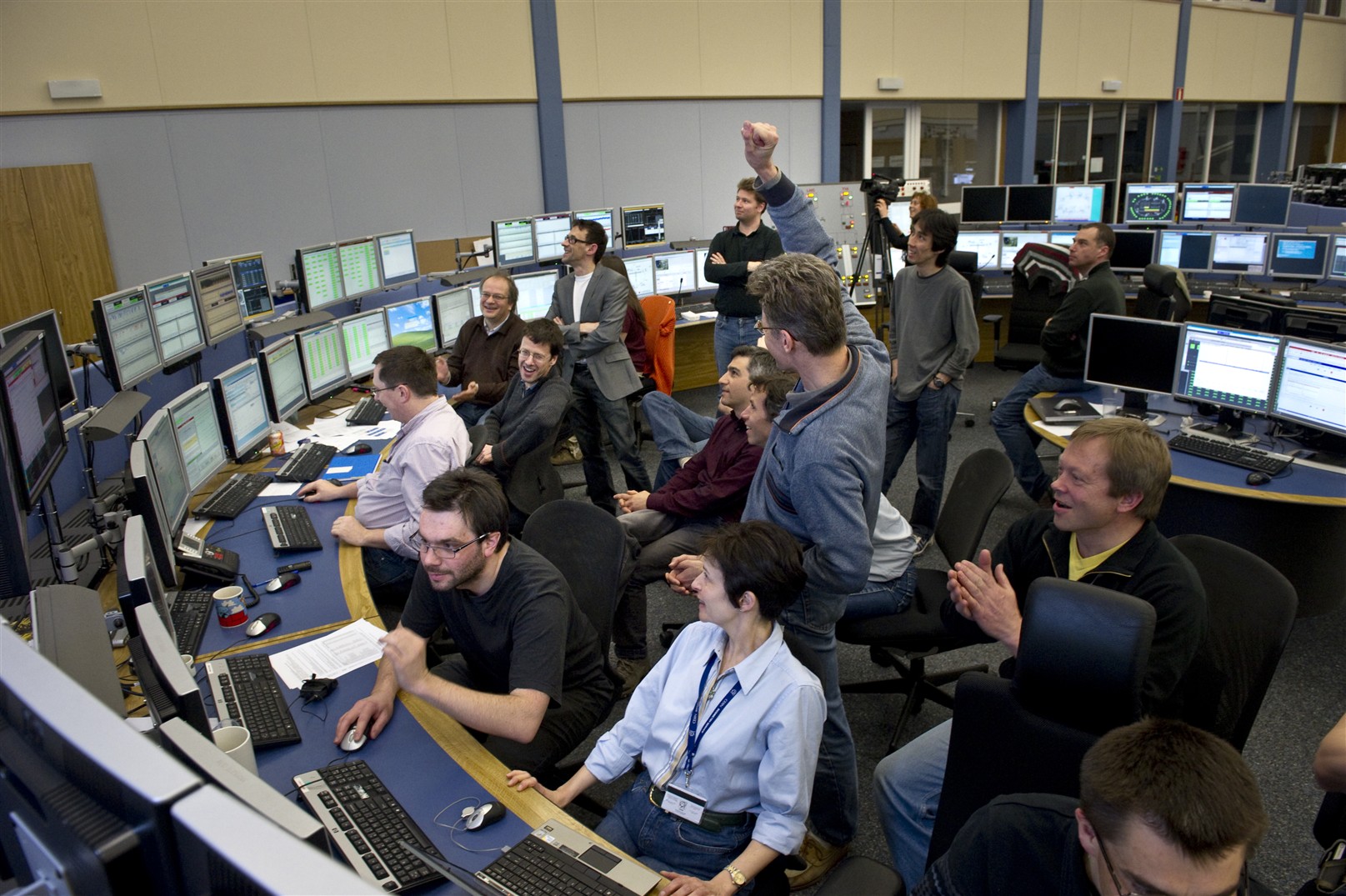In case you haven't heard, early on Friday morning the LHC reached an energy of 3.5 TeV per beam, its target energy for 2010-2011. They did not collide the beams, in fact they lost them five minutes after reaching the historic energy, however they achieved a big milestone in reaching that energy. The first official collisions at 7 TeV are due March 30th, when CERN hosts another "media day" where they invite the press to witness the event. I'm sure the beam operators agree with us experimentalists that its pretty ridiculous to specify a day for first collisions. It's like prescheduling a press conference for the birth of a child. Sure there is a due date, but when the big event will actually occur is hard to predict. Unlike labor, however, the first collisions can be held up by the "powers that be" if they look like they are going to be ready ahead of time.
LHC operators on Friday morning.
While I was not in the control room for the 7 TeV beams, I was around for a crucial precursor test on Thursday night. The LHC installed a new
quench protection system (QPS) in the wake of the 2008 accident, to prevent the disaster that gave us this year long delay from happening again. A quench, as
I've mentioned before, is when a superconducting magnet, which has no resistance in its superconducting state, develops a resistance and suddenly losses its
superconductivity. I'm not sure if it's the new part of the system, or the existing part, but the QPS is now too sensitive. When the LHC is turning up the currents in the magnets to bring them to the needed strength for a 7 TeV beam, the little fluctuations in the current values are enough to set the QPS system off. This is problematic because what the QPS actually does is induce a controlled quench, distributing the energy more evenly along the magnet system. In the tests performed early this week many magnets were quenching due to the QPS which is dangerous for the machine because the released energy heats up the superfluid helium and the LHC cooling system can't handle many magnets quenching at once. As a temporary solution the beam operators decided to ramp up the current 5x more slowly than they normally do. They were testing this fix by ramping the current in the magnets without beams durning my Thursday shift. If it worked then we could ignore the QPS problems and procede with the 7 TeV beams, if it didn't the LHC would have to order new hardware to fix the problem which would've meant another 1-2 month delay. We all held our breath and watched the LHC current inch upward on the monitoring plots during the 75 min ramp. It was quite exciting when they reached the necessary current, even though there were not any beams!
The other milestone which makes this post title plural, is that I am now a fully qualified pixel shifter. This isn't a big deal, all it means is that I get to sit at the Pixel desk all by myself and do what the experts tell me to do. But still, it is kinda neat because I've had very little contact with the actual detector since I joined the Berkeley ATLAS group. When I was at Orsay I worked on pieces of the Liquid Argon calorimeter, but since then I have been exclusively working on software. It is fun to sit in front of four monitors and run calibration scans or monitor the detector status. I'm sure the novelty will wear off soon, most likely next week during one of my four morning shifts, but for now it is amusing.


No comments:
Post a Comment